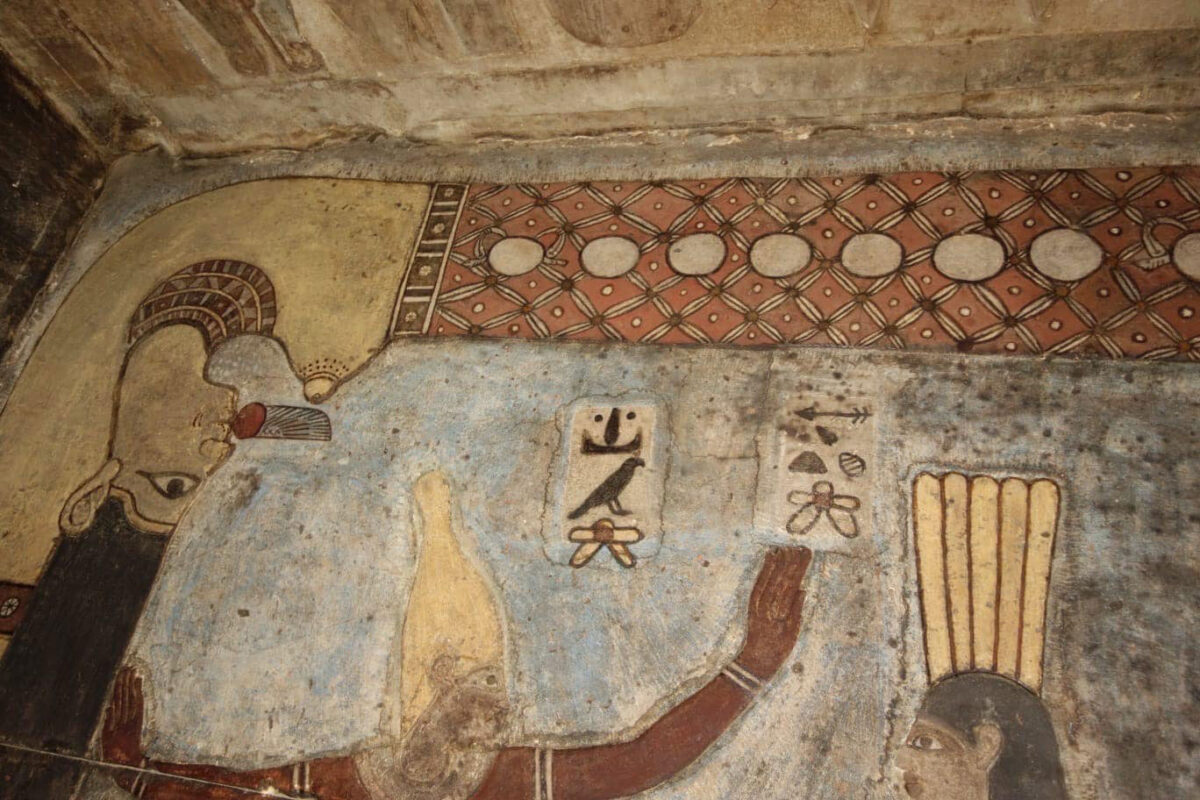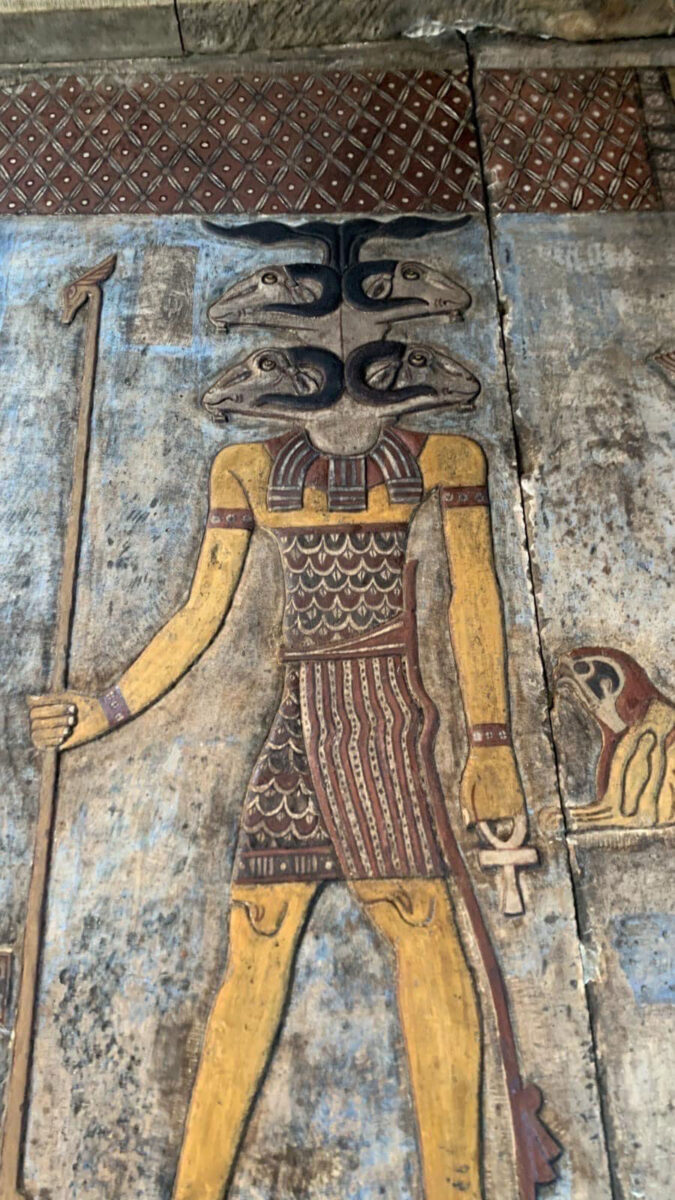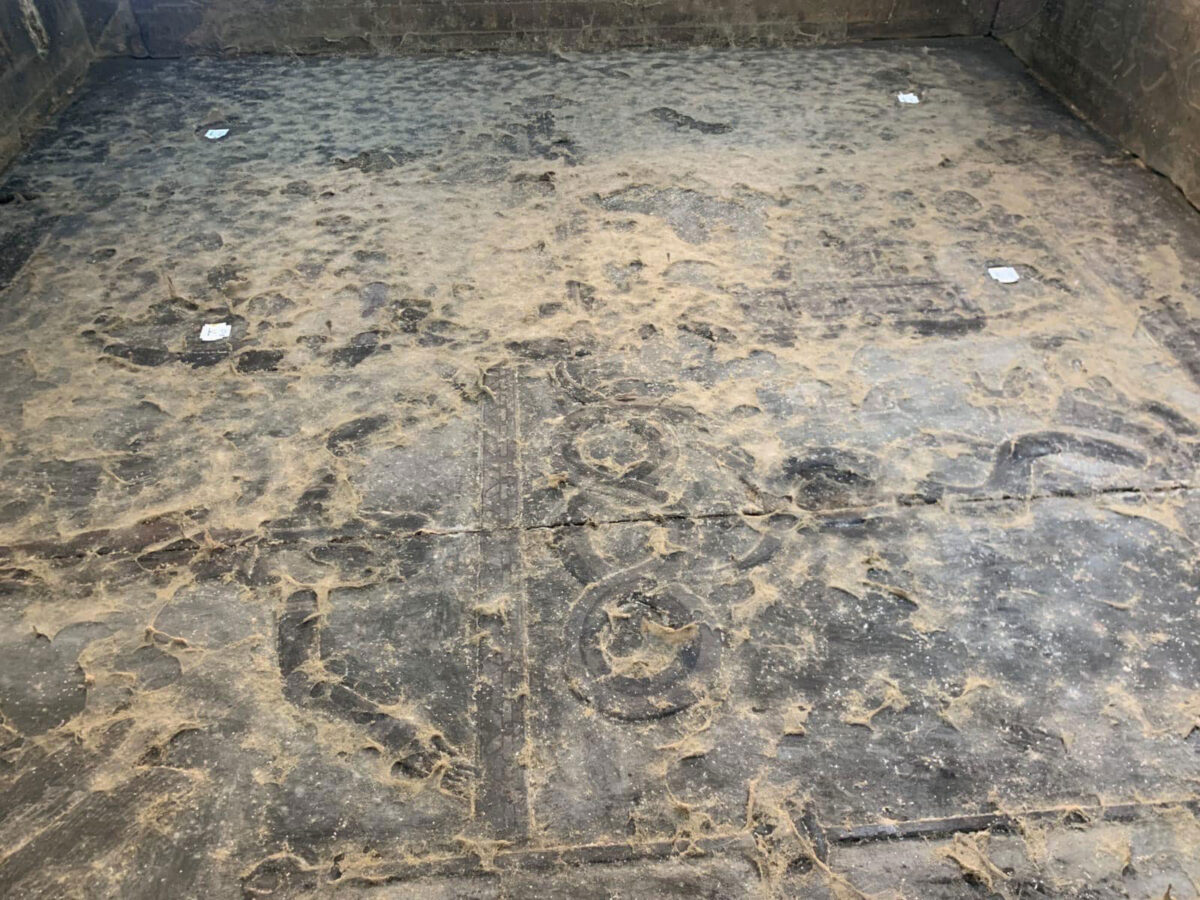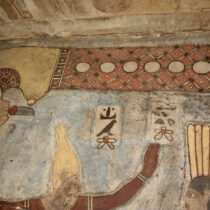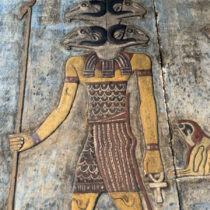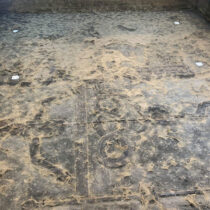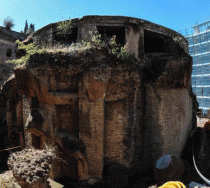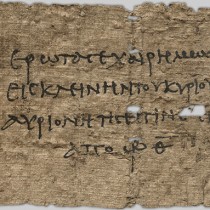Esna Temple’s “facelift” proceeds successfully as the joint Egyptian-German archaeological mission of the Egyptian Antiquities Registration Center at the Supreme Council of Antiquities and the University of Tübingen entered the seventh and final stage of cleaning and conserving the temple’s ceiling. The works of removing soot from the decorated spaces are part of the restoration and documentation project of the Temple of Esna, which began in 2018 and has, so far revealed some of the original appearance of the temple walls, including their bright colors.
Dr. Mustafa Waziri, Secretary General of the Supreme Council of Antiquities, praised the effort made by the archaeological mission working on the project. He pointed out that that restoration will improve visitors’ experience of the temple, which comes within the framework of one of the axes of the national strategy for tourism development in Egypt.
For his part, Dr. Hisham Al-Laithi, head of the Central Administration for the Registration of Egyptian Antiquities and head of the mission from the Egyptian side, said that the scenes in the seventh and final part of the ceiling of the Temple of Esna include representations of the sky goddess Nut and other scenes which depict the celestial constellations.
Dr. Christian Leitz, head of the mission from the German side, pointed out that one of the most important scenes that appeared following the ceiling’s conservation in the eastern part of the temple depicted the god Sotis, in addition to a depiction of the sun god Khnum-Ra with four ram’s heads at the sixth hour of the day
The Temple of Esna is located about 100 m from the west bank of the Nile in the city of Esna. Its history dates back to the Roman era. Its construction began during the era of the Roman Emperor Claudius in the first century AD, and its decoration project finished in the era of Emperor Decius (c.249-251 AD). The temple was dedicated to the worship of the god Khnum in the form of a ram.
